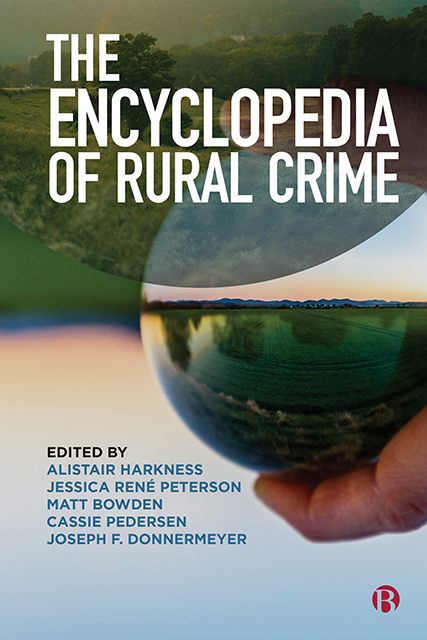Book contents
44 - Anti-social Behaviour: Police—Community Relationships
Published online by Cambridge University Press: 20 June 2023
Summary
The oft remote or ‘abstract’ nature of service provision in rural communities means that there is an ever-present requirement to capitalize on and utilize existing community networks. This is particularly true with low-level ‘nuisance behaviour’, often termed ‘anti-social behaviour’ (ASB).
ASB in the United Kingdom is generally defined as harassment or action that can cause distress to someone not in the perpetrator’s household (see Brown, 2013). A recent shift in the culture of crime control is evident through legislation criminalizing ‘nuisance behaviour’ and other policy around ASB, particularly in the United Kingdom. The devolving of crime control – from the ‘police’ to the third sector, community groups and other individuals responsible for control – means that criminal justice actors are no longer the only individuals in the crime control field.
The adaptive strategies of individual communities vary across space and time, leading to an uneven situation of crime control, with some communities engaging wholeheartedly in informal policing methods and others not having the apparent ‘community capacity’ to cope (see Garland, 2001).
ASB has most commonly been associated with urban environments, in part because there is statistically less ASB recorded in rural environments. Additionally, ASB is often associated as being less serious, intense and frequent in rural locations than that which exists in urban environments. The distinctive characteristics of rural environments, though, are central to understanding the nature, meaning and impact of ASB in this environment.
That is not to say that ASB in rural communities has less of an impact on people’s lives. The police are required to respond to ASB in rural communities and often do so with a complex mix of ‘soft policing’ and urban style policing strategies, including the use of discretion and other tactics. In particular, owing to the large police beat areas in rural communities, police officers are often required to negotiate and work with communities to find solutions to low-level incivilities.
There are numerous examples internationally where the police have worked with different groups of people to prevent ASB in rural communities.
- Type
- Chapter
- Information
- The Encyclopedia of Rural Crime , pp. 181 - 183Publisher: Bristol University PressPrint publication year: 2022



